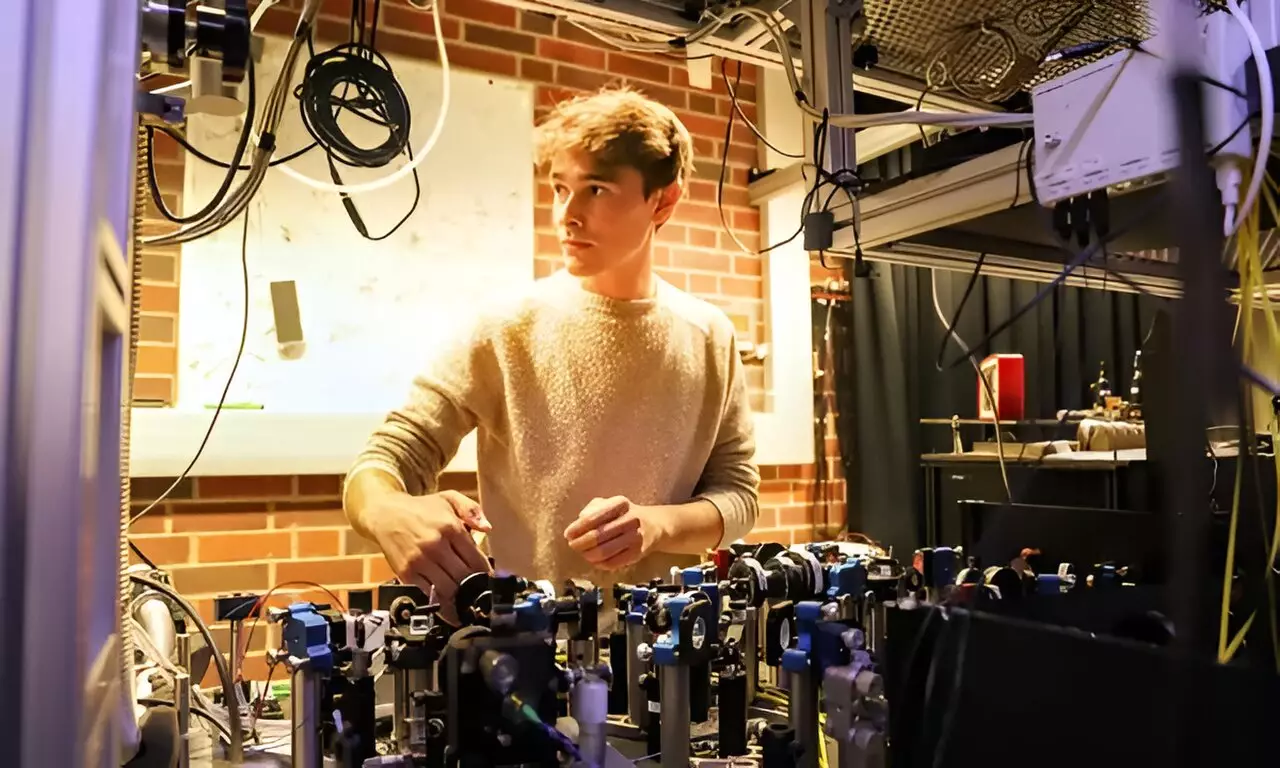The realm of quantum mechanics is fraught with paradoxes and intricate phenomena that challenge our classical intuitions. A recent investigation led by Robert Keil and Tommaso Faleo from the Department of Experimental Physics has shed light on the intricate relationship between entanglement and interference in quantum systems comprising more than two particles. Collaborating with teams from esteemed institutions in Germany and the U.K., the researchers strive to deepen our understanding of this relationship, unveiling the sophisticated behavior of multi-particle quantum systems.
Unraveling Entanglement’s Mystique
Entanglement stands as one of the cornerstones of quantum mechanics, signifying a state in which particles become intertwined to such an extent that the state of one particle cannot be described independently of the other, regardless of distance. This profound interconnectedness poses a multitude of implications for theoretical physics and practical applications in quantum technology. Faleo articulates the researchers’ motivation: to elucidate the complex dynamic that arises from entangled systems, particularly how they influence interference patterns when multiple particles converge. This exploration not only aims to demystify quantum entanglement but also paves the way for groundbreaking advancements in quantum computing and secure communication.
Within the domain of classical physics, interference occurs when multiple waveforms interact, either amplifying or neutralizing each other through constructive and destructive interference. This fundamental concept has a direct analog in quantum mechanics. Here, the probability amplitudes—essentially the likelihood of potential outcomes—engage in a similar dance, leading to either heightened or diminished probabilities of certain measurement results. The investigation specifically targets multi-particle interference, a phenomenon that extends the two-particle interference first observed by Hong, Ou, and Mandel in the late 1980s.
As their findings illustrate, when extending the principles of interference to systems involving more than two photons, the resulting patterns present a far more intricate tableau than the original Hong-Ou-Mandel experiment could illustrate. Such complexity arises not merely from the individual states of each particle but is further influenced by the presence and nature of entanglement, offering a rich field for exploration.
Insights from Experimentation
The crux of this research revolves around disentangling the effects of entanglement on interference patterns. Faleo highlights that when interference is observed in multi-particle systems, the entangled nature of some particles creates a bridge that alters the spatial distribution of interference. Essentially, these entangled states act as channels that transmit information and influence the overall interference pattern, providing a holistic view that would be lost if individual particles were considered in isolation.
Through careful analysis, the researchers uncovered a new type of collective interference effect that arises specifically from the entanglement among participants within the quantum system. This revelation is not merely academic; it enhances our theoretical framework by revealing how intertwined quantum systems operate, thus enriching our knowledge of many-body quantum mechanics. The potential ramifications are profound—this understanding could lead to novel applications in quantum technologies, fostering innovations in areas such as quantum teleportation and cryptography.
The exploration undertaken by Keil, Faleo, and their collaborators brings us a step closer to unlocking the complexities of multi-particle quantum systems. Their work underscores the delicate interplay between entanglement and interference, illustrating how these phenomena coalesce to shape the fabric of quantum reality.
Moving forward, the implications of this research are poised to echo throughout both theoretical exploration and practical applications in quantum technology. As these scientists continue to peer into the enigmatic world of quantum mechanics, they invite us to consider the possibilities that lie beyond our traditional understandings, suggesting that the future of quantum physics holds even deeper secrets awaiting discovery.


Leave a Reply